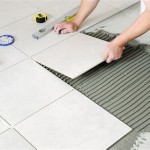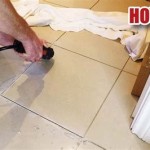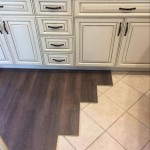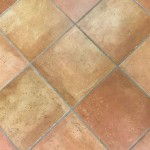Essential Aspects of Laying Cement Board For Tile Floor
Installing tile flooring requires a solid and stable base, and cement board is an excellent option for creating this foundation. Cement board is a durable, moisture-resistant material that provides a smooth and even surface for tile installation. Laying cement board correctly is crucial to ensure a successful and long-lasting tile floor. Here are the essential aspects of laying cement board for a tile floor:
Materials and Tools
Before starting, gather the necessary materials and tools:
- Cement board
- Thin-set mortar
- Notched trowel
- Drywall screws
- Impact driver or drill
- Level
- Measuring tape
- Safety glasses
- Dust mask
Floor Preparation
Prepare the subfloor by ensuring it is clean, level, and dry. Remove any existing flooring, debris, or obstacles. If the subfloor is not level, use self-leveling concrete to create a smooth surface.
Laying the Cement Board
Start by measuring and cutting the cement board to fit the floor area. Apply thin-set mortar to the subfloor using a notched trowel. Place the cement board on the thin-set mortar, starting from one corner. Press the board firmly into place and use a level to ensure it is even.
Secure the cement board to the subfloor using drywall screws. Space the screws approximately 6 inches apart along the edges and 8 inches apart in the field. Countersink the screws slightly below the surface of the cement board.
Continue laying the cement board, staggering the joints to improve strength. Leave a small gap of 1/16 inch between each board to allow for expansion and contraction.
Seaming and Taping
Once the cement board is installed, seam the joints using thin-set mortar and alkali-resistant mesh tape. Apply thin-set mortar to the joint and press the mesh tape into it. Smooth the tape with a trowel to remove any excess mortar.
Drying Time
Allow the thin-set mortar to dry completely before proceeding with tile installation. The drying time varies depending on the type of mortar used, but typically takes 24 to 48 hours.
Additional Tips
- Use a dust mask and safety glasses when working with cement board as it produces fine dust.
- Wear gloves when handling cement board to prevent cuts.
- Cut cement board using a utility knife or a circular saw equipped with a carbide blade.
- Store cement board in a dry, flat location.
- Consider using a backer board or a soundproofing underlayment beneath the cement board for added support and moisture protection.
By following these essential aspects, you can successfully lay cement board for a tile floor that is durable, stable, and ready for tile installation.

How To Install Cement Board On A Floor Diy Family Handyman

How To Install Hardie Backer Cement Board On Floors James Pros

Cement Backerboard Floor Tile Installation Uncookie Cutter

How To Install Cement Board In 3 Easy Ways Q3 2024 Infographic

Installing Cement Backerboard For Tile Flooring Hometips

How To Install Cement Backer Board For Floor Tile Installation The Home Depot

Cement Backerboard Floor Tile Installation Uncookie Cutter

How To Install Cement Backer Board For Floor Tile Installation The Home Depot

Cement Board Installation On Floors 5 Mistakes To Avoid Diytileguy

Durock Cement Board Do S And Dont
Related Posts








